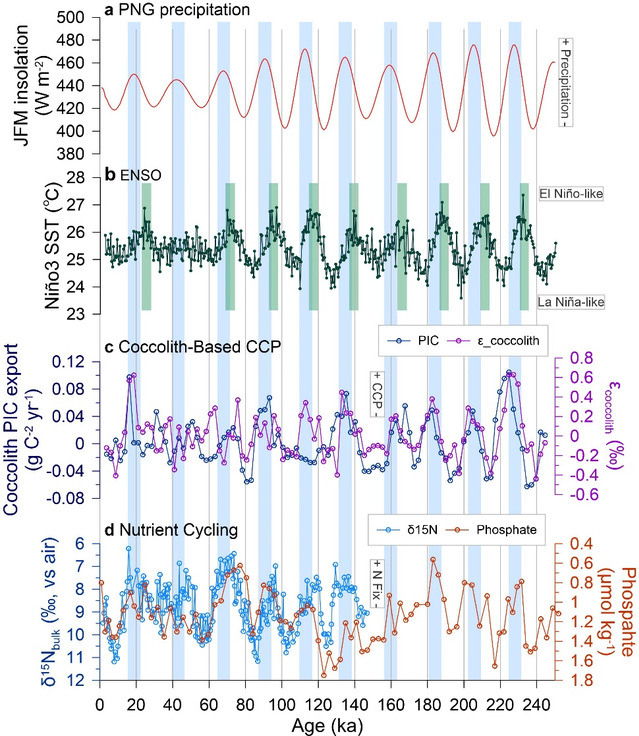Xiaobo Jina, Xingxing Wanga, Xinquan Zhoua, Xiaoying Jianga, Peijun Qiaoa, Chuanlian Liua
aState Key Laboratory of Marine Geology, Tongji University, Shanghai 200092, China
Abstract:Unravelling the biogenic material export production and its relationship to surface ocean nutrient conditions, along with their external forcing, will provide insights into the ocean carbon biogeochemical cycle. In this study, we present data on coccolith particulate inorganic carbon (PIC) export production, coccolith carbon isotopic vital effects, and planktonic foraminifer cadmium to calcium ratio in the tropical western Pacific over the past 250 kiloyears (kyr). These proxies indicate the strength of the coccolith-based carbonate counter pump or coccolithophore productivity, and phosphate concentration in the surface ocean. Our results show that low phosphate concentration correlates with enhanced coccolith-based carbonate counter pump in the precessional band (a cyclicity of 19–23 kyr). Additionally, low phosphate concentration, which indicates high degree of phosphorus utilization, is coupled with enhanced nitrogen fixation, as shown by a nitrogen isotope record in the tropical western Pacific. Greater precipitation in Papua New Guinea (PNG) can occur during local insolation maxima, suggesting a dominant control of precession. This will in turn drive the biogeochemical and nutrient cycling in the tropical western Pacific. We propose that higher amounts of the PNG riverine input caused by greater precipitation can provide additional nutrients and trace element iron (Fe) for phytoplankton. An increased bioavailable Fe in the surface ocean can promote the growth of nitrogen-fixing diazotrophs, which results in a high degree of phosphorus utilization and relieves a potential nitrogen limitation. This may ultimately lead to increased biological productivity, e.g., the coccolith PIC.
Full Article: https://doi.org/10.1016/j.epsl.2024.118759



